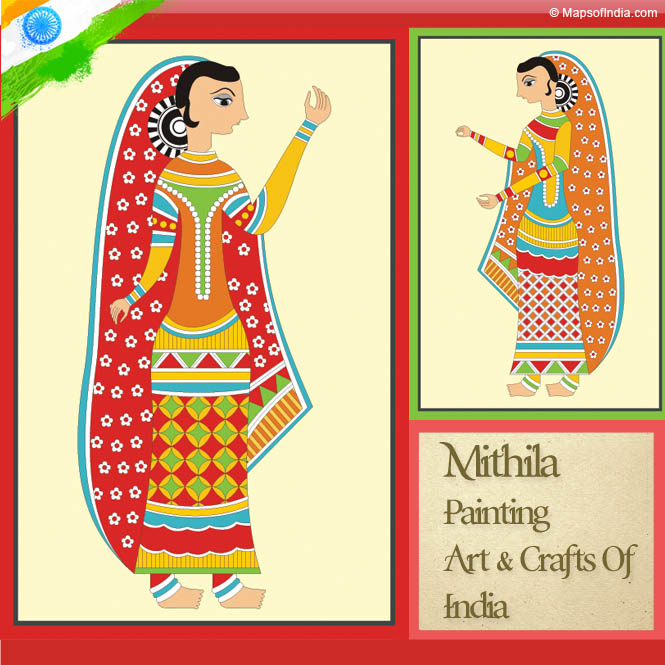
The creativity of a woman has touched each and every region of India in its own way. Like phulkari in Punjab, kanthan in Bengal, warli in Gujarat and mithila painting in Bihar, all are created very artistically by women without a degree in Fine Arts. Mithila (also known as madhubani painting) started as a household ritual activity and as a way to adorn walls of the houses in the Mithila region in Bihar. This painting style is carried out solely by women and was inherited across generations. Traditionally done only on the walls of the houses, with time it started being done on paper, fabric, as well as readymade garments. Not only this, but many home décor accessories like magazine holders, napkin rings, lamps shades, coasters, etc are available with mithila paintings. To make madhubani paintings, images of gods, goddesses, mythological characters, fish, animals, flowers and even day-to-day life scenes are created in both coloured and black-and-white form. Some historical background Legend has it that King Janak (father of the Goddess Sita) of Mithila, Bihar asked the local artists to create paintings at the time of the wedding of Sita to Lord Rama. Since then Mithila paintings were used to decorate homes especially during festivals and weddings. Till 1934, Madhubani painting style was not known to the rest of India. A time when, William G. Archer, the British colonial officer in Madhubani District, was inspecting the extent of destruction after the massive earthquake of 1934, he saw walls of the houses decorated with Mithila paintings. He was stunned to see such beautiful paintings. He took these wall paintings to the rest of the world and got the public’s attention by publishing an article in the Indian art journal, Marg in 1949. Traditionally Mithila painting is done in three forms – floor paintings, wall paintings and paintings on movable objects. Floor paintings are done with rice paste, whereas wall paintings are its colored form. Three to four different colors are used for this purpose. Clay models of pots, elephants, mats and even the face of brides are included in paintings on movable objects. The present day’s form of Mithila painting is a transition of wall painting style. This change did not happen a long time back, but in the late 1960s. The objective was to generate income for drought-stricken families. The All India Handicrafts Board pushed some women from upper castes in villages around Madhubani town to transfer the rituals of wall painting on paper. Initially, it did not garner a lot of response, but soon, it opened a new market of buyers. Four of these women even represented India in cultural fairs in Europe, Russia, and the USA. So, this was the second step that helped in popularizing Mithila paintings and since then Mithila painting on paper has become famous. Women from other castes and communities like Kayasthas, Harijans, etc also came forward and joined the same cause. Tips to paint Mithila style Mithila painting usually consists of geometrical patterns and done with the help of fingers, nib, pen, twigs, matchsticks. Colors used are natural dyes and pigments. Traditionally, the paste of powdered rice was used to create Madhubani painting. Choose a design – If you are a beginner, then select a simple design. Otherwise, you can pick a difficult one as well. Draw and trace – Keep the trace paper on the design and draw the entire design neatly. By using carbon paper, transfer the design from trace paper to fabric, canvas or wall. Draw outline – Traditionally, instead of single outline, double lines are drawn and the gap between these lines is filled with very thin cross or straight lines. If you are doing linear painting, then only lines are drawn, without any color. Time to color – If you are creating a pattern on fabric, then use fabric colors otherwise use poster colors. The colors are applied in a flat manner which means not use any shading technique. So, once the outline is drawn, color the picture with bright shades. Handy Tips
- In traditional Mithila paintings, only basic colors such as red, yellow, orange were used. So, try picking up the design that has a bright color combination.
- Select a simple and easy-to-draw pattern.
- Tracing needs to be perfect. All the features and faces should look like what is seen in a Mithila painting.
- Make sure to add beautiful borders.



